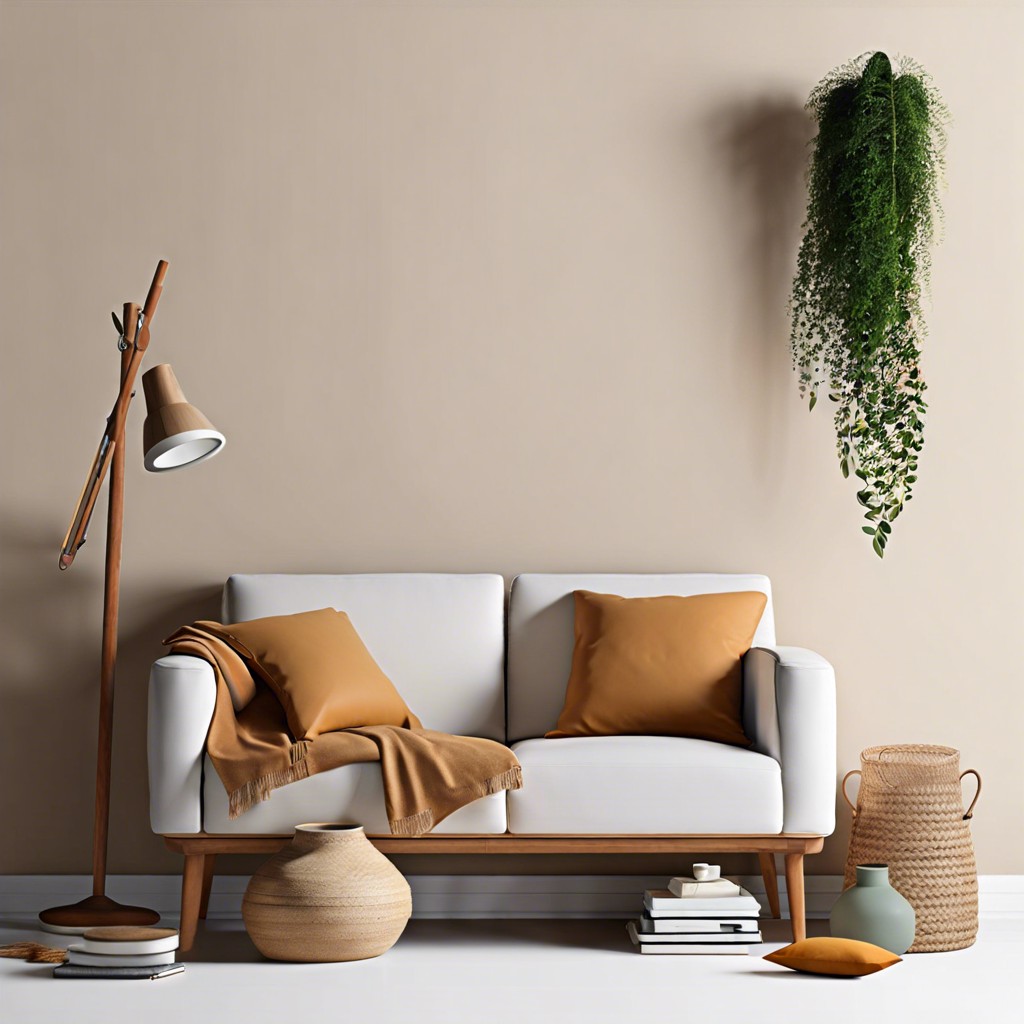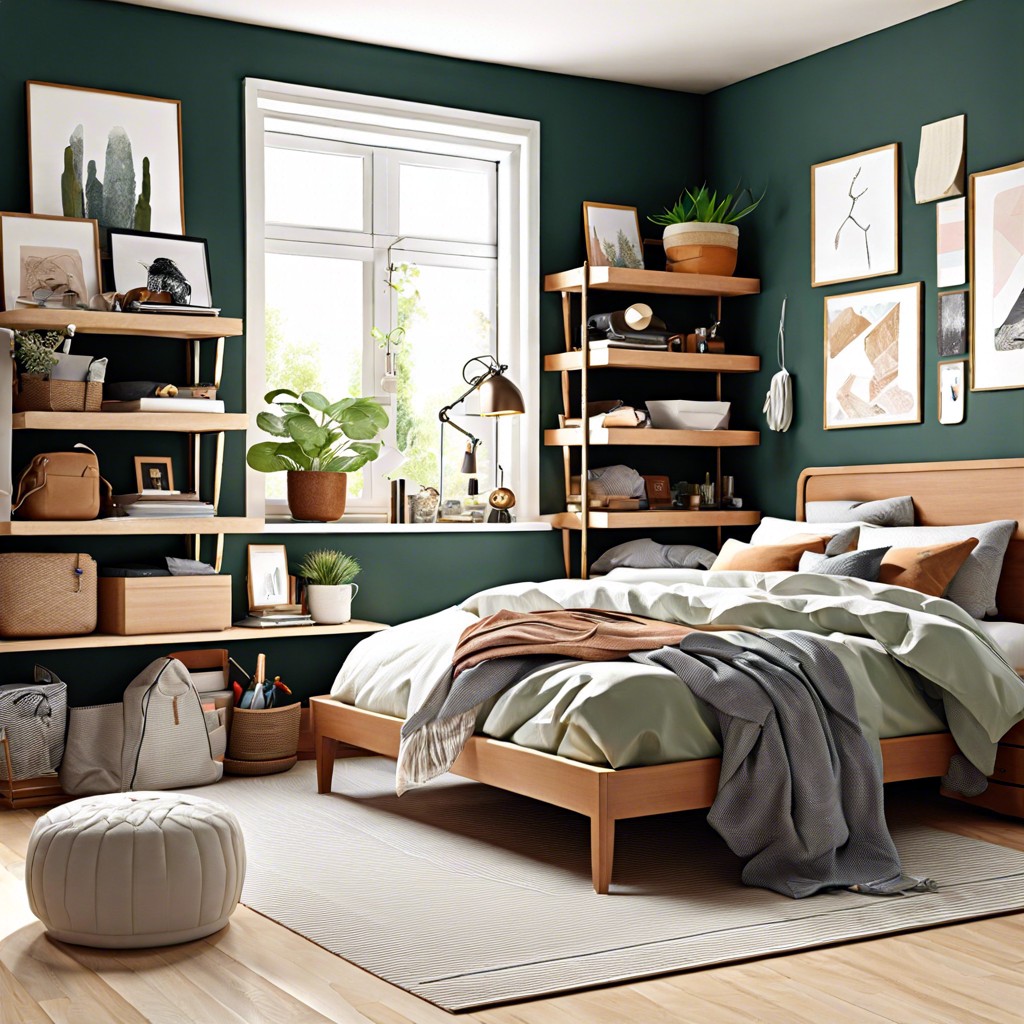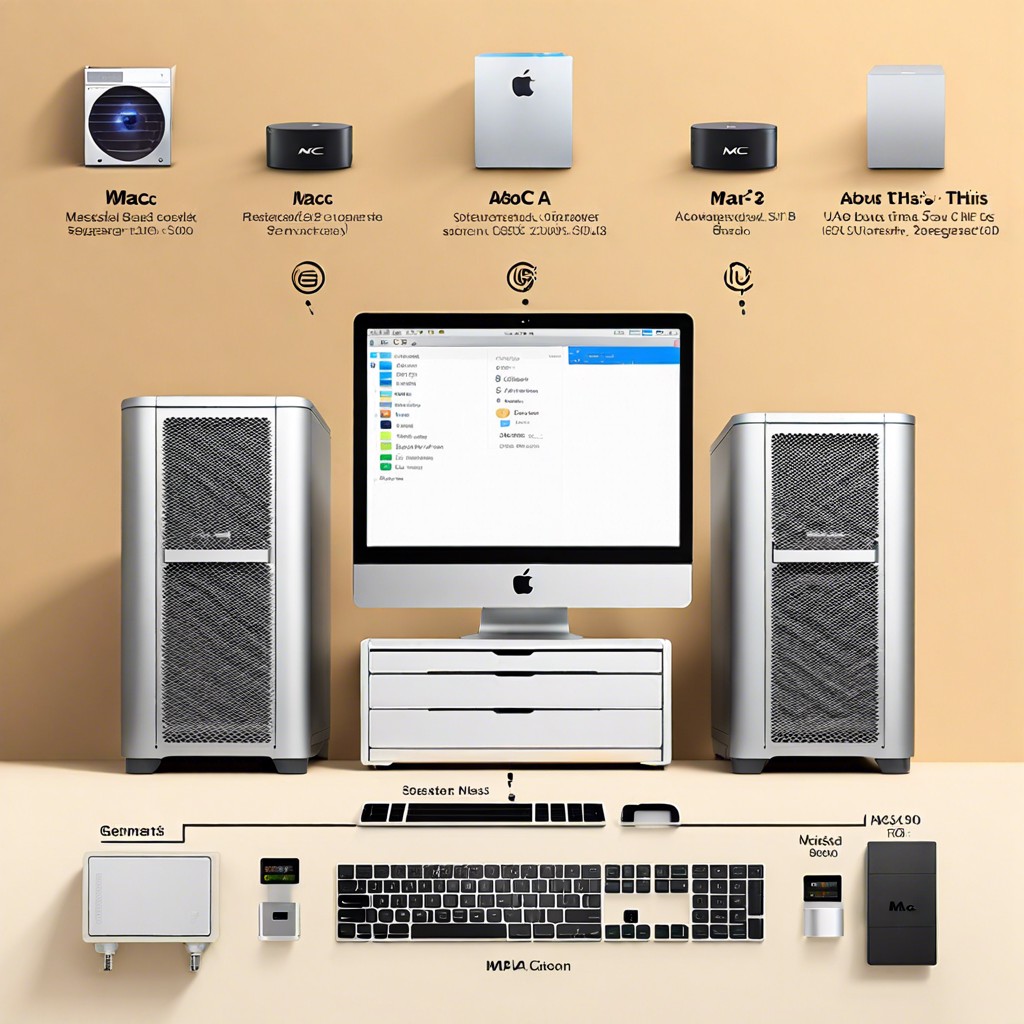Embarking on a decluttering journey can be overwhelming, but a comprehensive list of areas to tackle simplifies the process and ensures no corner remains cluttered.
Drowning in clutter and unsure where to start? A decluttering list is an absolute game-changer. It’s a roadmap that guides you through the process, ensuring you don’t miss a thing.
This article provides an extensive, room-by-room decluttering list, helping you systematically eliminate unnecessary items from your life. From the kitchen to the garage, every space is covered.
By following this list, you’ll be able to declutter your home effectively, creating a more organized, peaceful environment. Stick around to discover the ultimate decluttering checklist that will transform your space, and ultimately, your life.
Importance of Decluttering
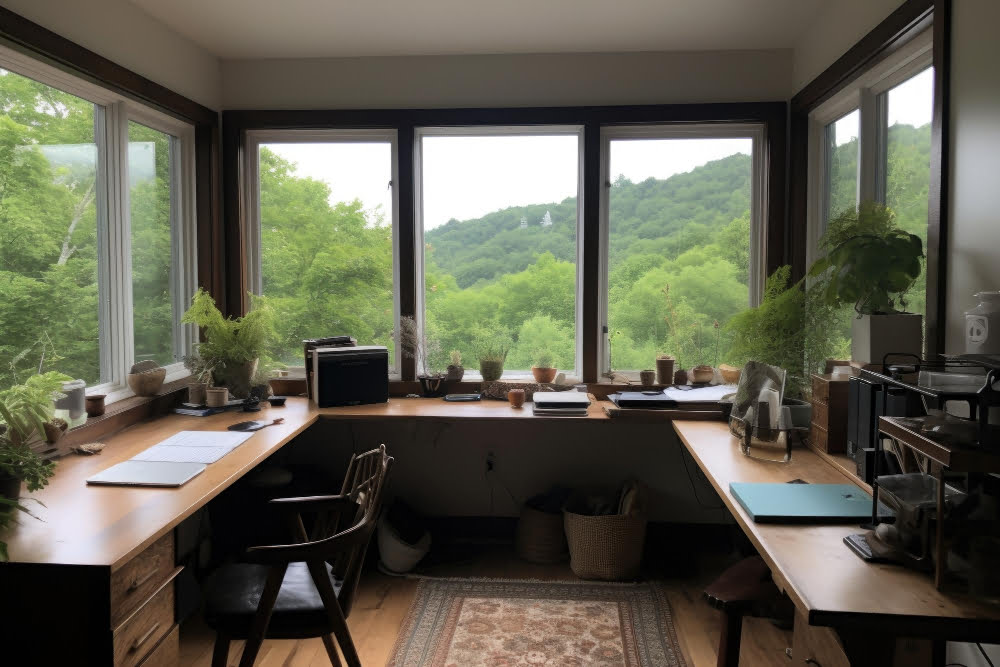
Decluttering not only enhances the visual appeal of your home but also contributes to improving your overall well-being. The physical act of decluttering indirectly impacts your mental health, creating a sense of order and reducing anxiety.
By eliminating unnecessary items, you create space for the things that truly add value to your life. Furthermore, decluttering prevents the accumulation of dust and dirt that can lead to health problems. It’s also an excellent way to identify items that are no longer useful, which can then be donated, recycled, or sold, promoting a less wasteful lifestyle.
First Steps to Declutter

Dive in by focusing on one room or area at a time; tackling it all at once can be overwhelming.
Begin with visible clutter and easily discarded items like old magazines or expired goods.
Utilize the four-box method: label boxes as ‘keep’, ‘discard’, ‘donate’, and ‘relocate’, sorting items accordingly.
Remember to be ruthless; keeping items ‘just in case’ contributes to clutter.
After sorting, immediately dispose of or donate the identified items to avoid second-guessing decisions.
This method provides a clear starting point and simplifies the task into manageable steps, facilitating continual progress without burnout.
Prioritizing Items

It’s critical to understand that not all items deserve a space in your home. Begin by identifying the things you use daily — these are your high-priority items and should be easily accessible.
Following this, consider the items you use occasionally but are still important, such as holiday decorations or seasonal clothing.
Lasty, deal with low-priority items, which are rarely used or no longer serve a purpose. These are perfect candidates for sale, donation, or disposal.
Remember, the goal of decluttering is to free your space from items that don’t add value to your life. Evaluate the importance and usage of every item to ensure an effective decluttering process.
Organizing Your Space
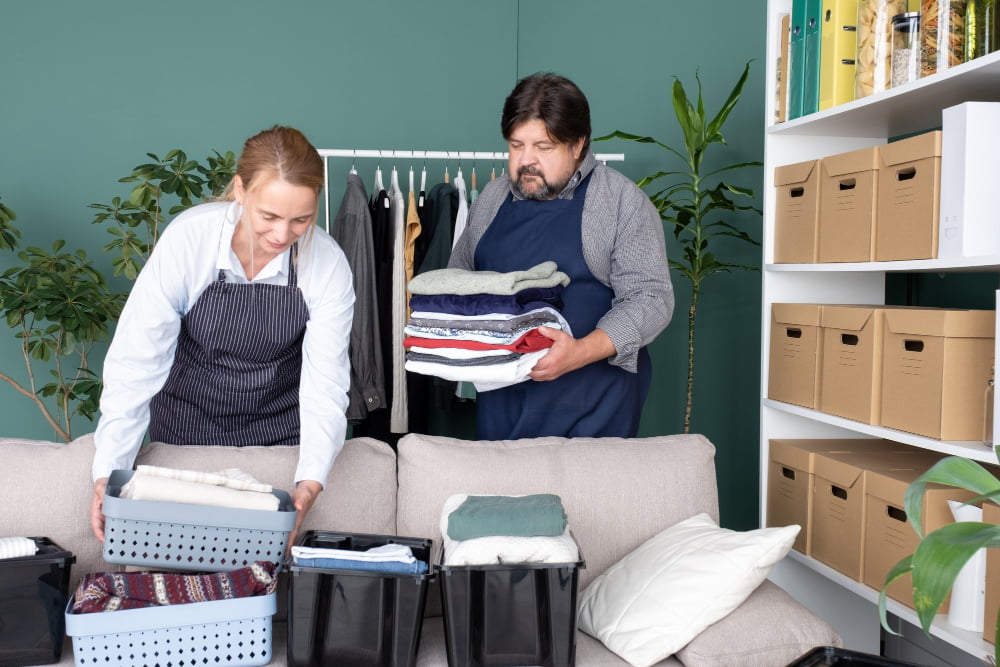
Start by categorizing items that you decided to keep during the decluttering process. Group similar items together, such as books, kitchen utensils, or office supplies.
Implement storage solutions that make sense for each category. Remember, functionality is key.
Use clear bins for items used less frequently so they can easily be identified when needed.
Install shelves and drawer dividers to maximize space.
Label everything accurately to make locating items easier.
Create a designated space for each item and ensure it returns there after each use.
This approach will maintain organization and prevent accumulation of clutter.
Handling Sentimental Items

Approaching sentimental items can be emotionally complex. However, parting with such items does not mean the loss of memories or connections. While it’s entirely permissible to keep sentimental items, it’s important to evaluate whether they genuinely give joy or merely add to the clutter.
First, separate sentimental items into categories such as photos, handwritten letters, inherited antiques, or children’s artwork. This categorization will make decision-making more manageable. Consider digitizing some things like old photos and school accolades.
Next, employ the “pick what to keep” method, rather than deciding what to discard. This minor shift in perspective can significantly ease the process. Select items that truly touch your heart and encapsulate the person or memory they represent.
Finally, designate a specific area or box for the sentimental belongings you’ve decided to keep. This measure will prevent them from becoming future clutter.
Remember, it’s about respect – for yourself, your space, and the loved ones that are represented by these items. Being selective ensures that you cherish the sentimental items, rather than them being lost in a cluttered space.
Making a Bathroom Declutter List
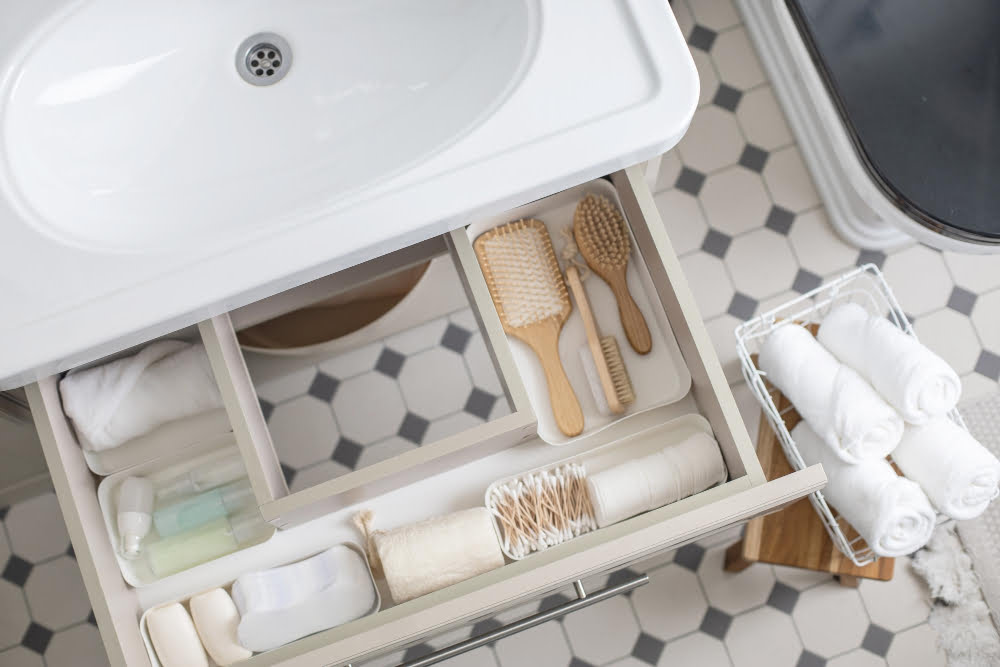
Begin by examining the items on your countertops and shower ledge. If they’re not used daily, relocate them to a more suitable place.
Consider getting rid of half-empty shampoo bottles or expired cosmetics. The medicine cabinet needs keen attention; dispose of outdated medications safely.
Don’t forget the linen closet: towels with wear and tear make great rags or pet supplies. Lastly, review cleaning products under the sink, discarding any you haven’t used in months.
Once this process is completed, a system to prevent future clutter is crucial; consider bins, drawer organizers, or additional shelving. A well-organized bathroom not only promotes cleanliness but enhances your daily routine.
Kitchen Decluttering Made Simple
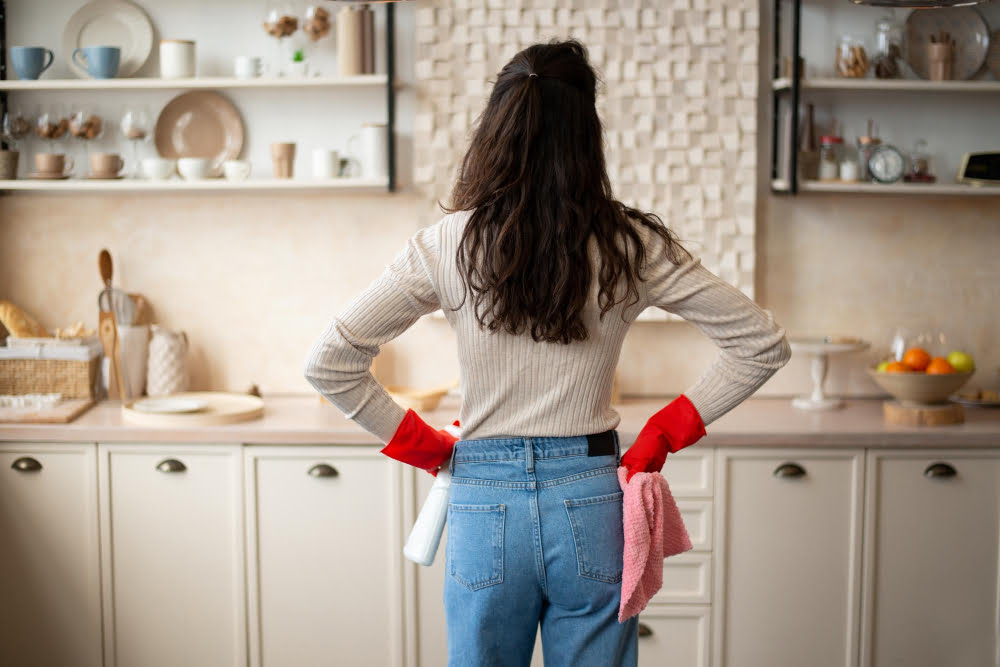
Initiate the process by emptying all cupboards and drawers. Categorize items into three piles: keep, donate, and trash.
Those you use daily, like cutlery and plates, belong in the keep pile. Items that are still in good condition but aren’t frequently used can be donated. Anything broken or worn-out should go into the trash bin.
Next, focus on counter space. It should be reserved for essentials such as a coffee maker, knife rack, or utensils holder. Less frequently used appliances should be stored in cabinets to maintain a clean and clutter-free countertop. Implement the use of storage solutions like cabinet organizers and pantry bins to maximize space.
Remember, the goal is to create a functional kitchen where every item has a designated place. Stick to a regular schedule, like decluttering once per month, to keep mess at bay and the kitchen user-friendly.
Decluttering Living Room Essentials
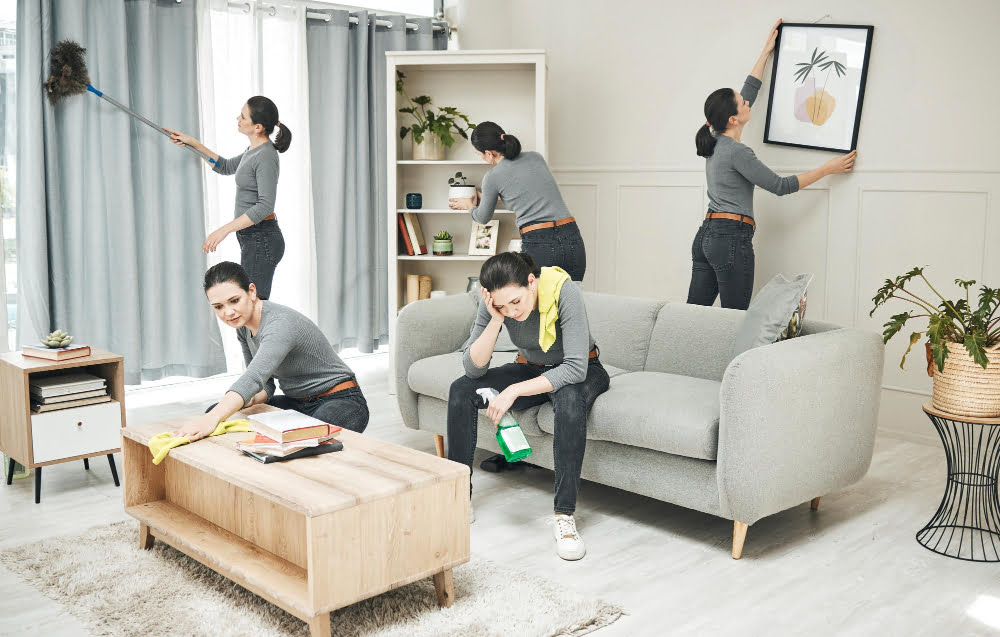
Begin by categorizing items into ‘keep‘, ‘donate‘, ‘sell‘, or ‘recycle‘.
Next, turn your attention to common areas of clutter such as media stands and coffee tables. Eject DVDs or CDs that haven’t seen the light of day in years. Also, face the harsh reality for magazines and newspapers- if they’re older than three months, it’s time to recycle them.
Consider files on the cloud, digital subscriptions, or a controlled number of hours for TV viewing. Deal with loose cables, a common sight in living rooms. Cable management boxes or zip ties are great tools to retain the aesthetic of your living room, while also keeping it de-cluttered.
Sift through the pile of books and evaluate which ones are worthy of shelf space. Remember, it’s not just about physical space. Decluttering your space declutters your mind, too.
Lastly, take a look around and remove any unnecessary decorations. Extra cushions, throws, and decor that no longer serve you visually or functionally should be discarded or repurposed. Strive for simplicity for a more relaxing living space.
Bedroom Declutter Routine
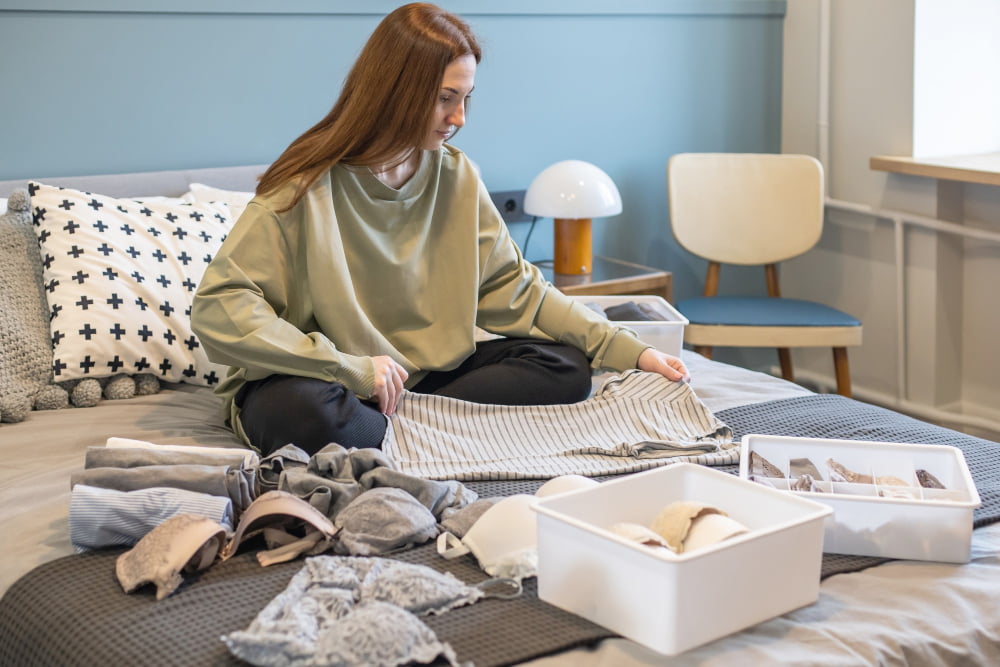
Begin with removing items that don’t belong in the bedroom. Misplaced objects often end up here, so this initial step creates instant clarity and room to work.
Next, address your wardrobe, examining each clothing item critically. Set aside clothes that haven’t been worn in the last year or don’t fit, ready for recycling or donation.
Then, declutter your bedside tables and dressers, clearing surfaces of unnecessary items and discarding any rubbish. This will immediately make your space feel more organized.
Proceed to paperwork, books, and digital devices. Limit bedside books to current reads and relocate the remaining ones to their proper shelves. Similarly, store digital devices away when not in use to discourage late-night screen time.
Finally, declutter under the bed, a notorious space for accumulated clutter. Remember, under the bed is a valuable storage resource for optimally sized items, not a dumping ground for unused ones. Regularly decluttering this space prevents built-up clutter and eases cleaning.
Incorporating this routine into a weekly or monthly schedule will ensure your bedroom remains a clutter-free, tranquil sanctuary.
Sorting Office Clutter
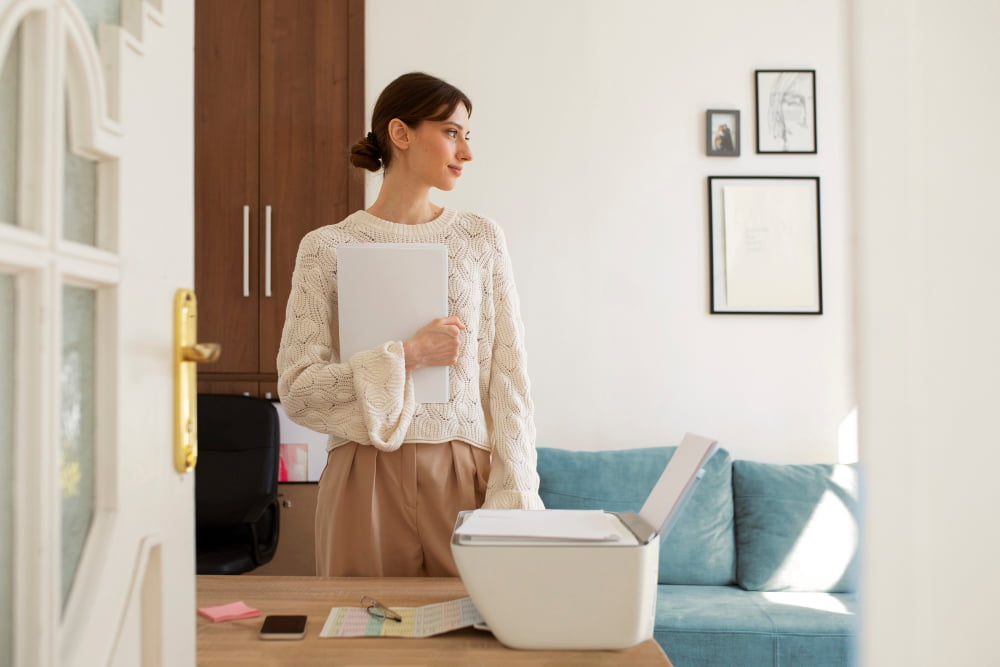
Approach your office with a refreshing perspective, viewing every item critically. Starting with the desk, get rid of old papers, outdated files, and non-functional pens.
Keep only essential stationary and limit the number of personal decorations. Create a digital storage system for important documents, which not only frees up office space but also protects files from loss or damage.
Don’t overlook the bookshelf. Review your collection and donate or sell books you no longer need. Consider switching to digital or audio books, which occupy zero physical space.
As for electronics, safely recycle any outdated gadgets or devices not in use. Cords and cables should be neatly organized, using ties or clips to avoid a messy appearance.
Remember to set up a system to manage incoming paper and electronic clutter. Follow this process regularly and you will have an office space that enhances productivity and reduces stress.
Decluttering the Playroom: A Checklist
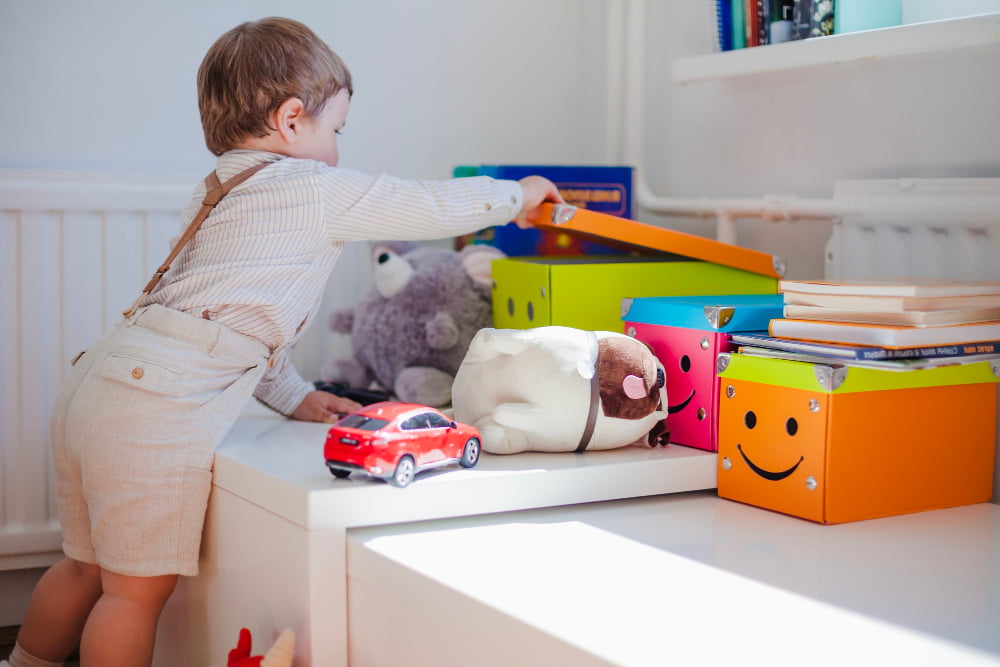
Begin by sorting toys into categories for a clearer view of what’s available. Deal with broken or outgrown toys first, either discard or donate, as keeping them contributes to visual noise.
Implement a selection criterion by letting kids pick their favourites, and ensure the remaining toys align with their age, interest, or developmental stage.
Next, consider how often each toy is used. Seasonal and rarely used items should be stored away and rotated periodically to maintain interest.
For daily use toys, opt for easily accessible, clearly labelled storage systems. Bookshelves, plastic bins, and basket systems are simple yet effective solutions.
Lastly, create a routine to encourage children to participate in cleaning up. This promotes cleanliness, organization, and responsibility, while also ensuring a constantly clutter-free playroom.
Maintenance Tips
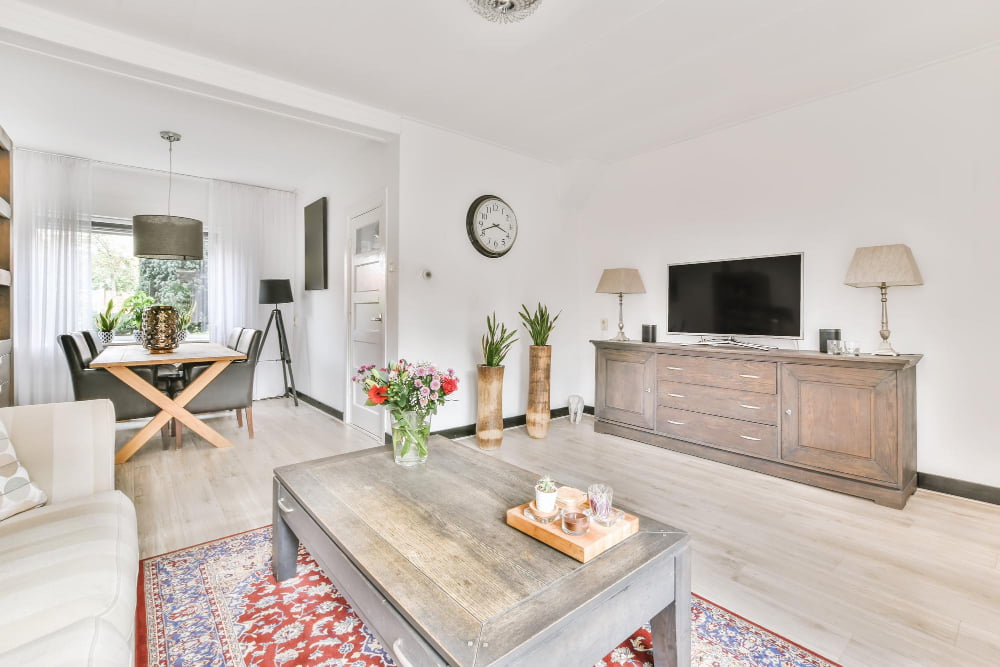
Maintaining a decluttered space once it’s tidy is crucial. To succeed, stick to the “one in, one out” rule: for every new item brought into the house, let one go.
Make it a habit to review your belongings periodically, discarding what no longer serves you. Monthly sweeps of typically clutter-prone areas such as closets, storage rooms, and kitchens keep the mess at bay.
Further, commit to returning items to their designated places after use. Remember, decluttering isn’t a one-time process, but a lifestyle choice that requires ongoing effort. Save time, reduce stress, and create a harmonious living environment with these simple, proactive maintenance practices.
Mental Health Benefits

A clutter-free environment contributes significantly to mental well-being. Research indicates that excessive clutter can lead to increased stress, anxiety, and even depression.
By creating a simplified, organized space, you experience fewer distractions which allows you to focus better, resulting in improved cognitive function.
Furthermore, the act of decluttering itself can be therapeutically liberating, as clearing your physical space often parallels to clearing mental space.
The sense of accomplishment after decluttering also boosts self-esteem, which can have a profound effect on overall happiness.
It is clear that decluttering goes beyond improving your physical environment; it also enhances your mental health, setting pathways for increased productivity and—ultimately—serenity.
Common Decluttering Mistakes
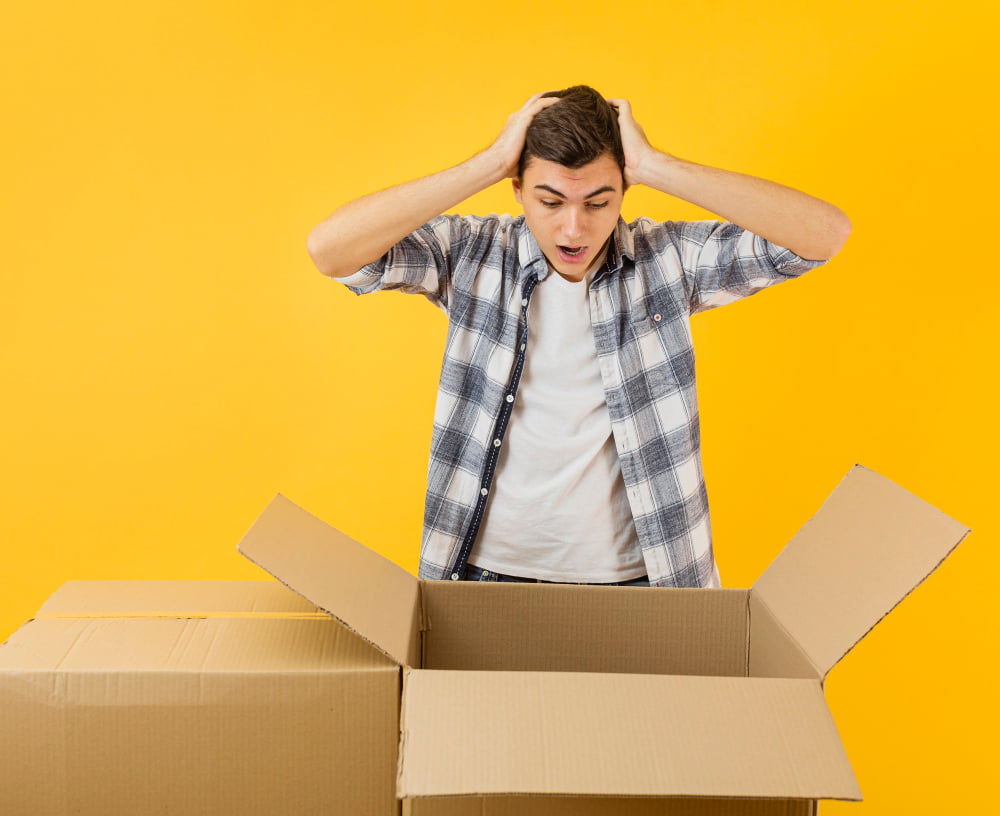
Overlooking the bigger picture is the first blunder many make. This mistake often leads to investing time on de-cluttering small, less cluttered areas while ignoring those that need immediate attention, such as the garage or attic. Prioritize your decluttering areas, focus first on what will make the biggest impact.
Next, purchasing storage solutions too soon can be counterproductive. The goal is to reduce, not just relocate your items. Remember, decluttering first, and then, as necessary, find storage solutions for items that are left.
Additionally, attempting to declutter the entire home in one go leads to exhaustion and burnout. Avoid this blunder by breaking the process into manageable tasks.
And finally, many people confuse decluttering with rearranging their belongings. It’s essential to remember that decluttering means removing surplus items from your space, not merely organizing existing clutter. Achieve a sustainable, clutter-free environment by discarding, donating, or selling unneeded items.
By being aware of and avoiding these common pitfalls, the decluttering process becomes less daunting and more effective.
Selling and Donating Items
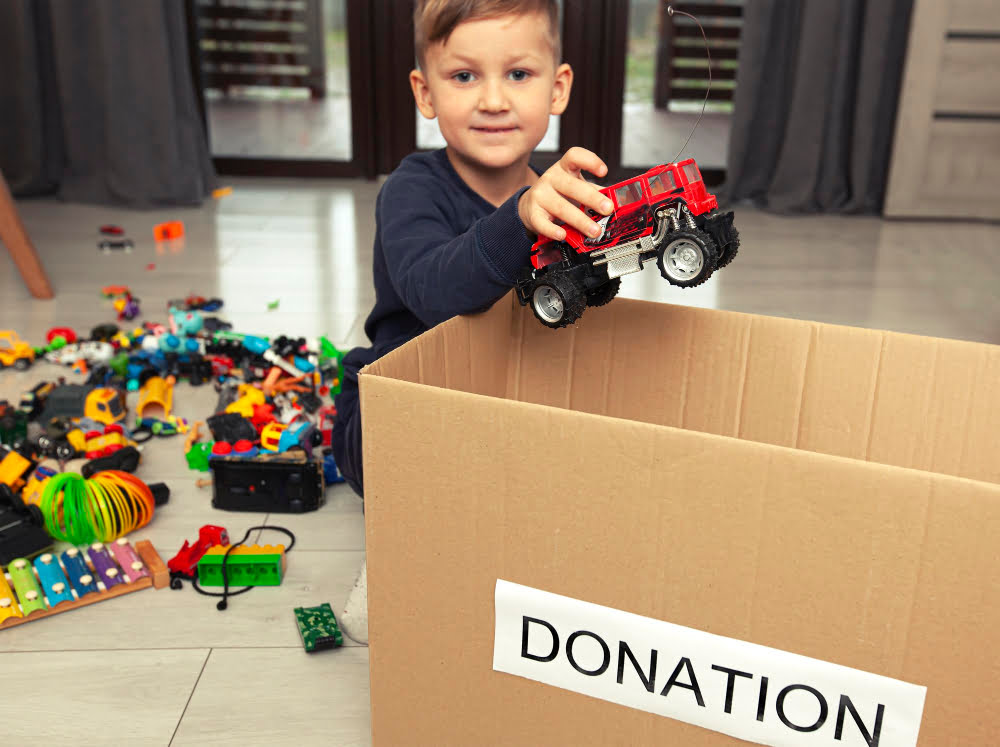
Once you’ve sorted out items to discard, take a moment to consider their condition before sending everything to the landfill.
Items that are still functional and in good shape can potentially find a new lease on life through resale or donation.
Online marketplaces like eBay or Facebook Marketplace are excellent platforms to sell items ranging from furniture to clothing.
For items of significant value, consider hiring an appraisal service or visit a local consignment shop.
Always price reasonably; remember, the primary goal is to declutter.
Meanwhile, charities are often in need of household items, clothing, and toys.
Make sure to check each charity’s donation guidelines before dropping off your items.
Some charities even offer pick-up services for large donations, saving you time and effort.
Through selling and donating, you not only declutter your home but also reduce waste, give items a second life, and possibly make some money or help those in need.
Success Stories and Inspiration

One woman managed to empty an entire room previously designated for storage within just two weeks. Freed from the chaos, she transformed the space into a serene home office.
Another gentleman utilized the decluttering process to identify valuable items hidden among the clutter which he sold online, making a sweet profit.
A family successfully decluttered their garage and is now able to park two cars inside—a first in a decade.
These stories stand as a testament to what you too can accomplish. Remember, every item discarded or donated is a step towards a more organized and stress-free life.
Find your rhythm, set achievable goals, and soon, you might have your own success story to share.
FAQ
What is the 20 rule decluttering?
The 20/20 rule in decluttering is the practice of discarding items that can be replaced in less than 20 minutes for less than $20.
What is the 12 12 12 rule for decluttering?
The 12-12-12 rule for decluttering involves identifying 12 items to discard, 12 items to donate, and 12 items to reposition in their correct locations in your space.
How can one use the Four-Box Method for effective decluttering?
The Four-Box Method for effective decluttering involves categorizing items into four groups: keep, throw away, donate and relocate, thereby streamlining decision-making and maximizing organization.
What is the significance of the 90/90 rule in decluttering?
The 90/90 rule in decluttering emphasizes that if an item hasn’t been used in the past 90 days and is not expected to be used in the next 90, it should be discarded to reduce clutter.
How can the KonMari Method revolutionize your decluttering routine?
The KonMari Method can revolutionize your decluttering routine by urging you to retain only those items that spark joy, leading to a cleaner, tidier, and more harmonious living environment.


